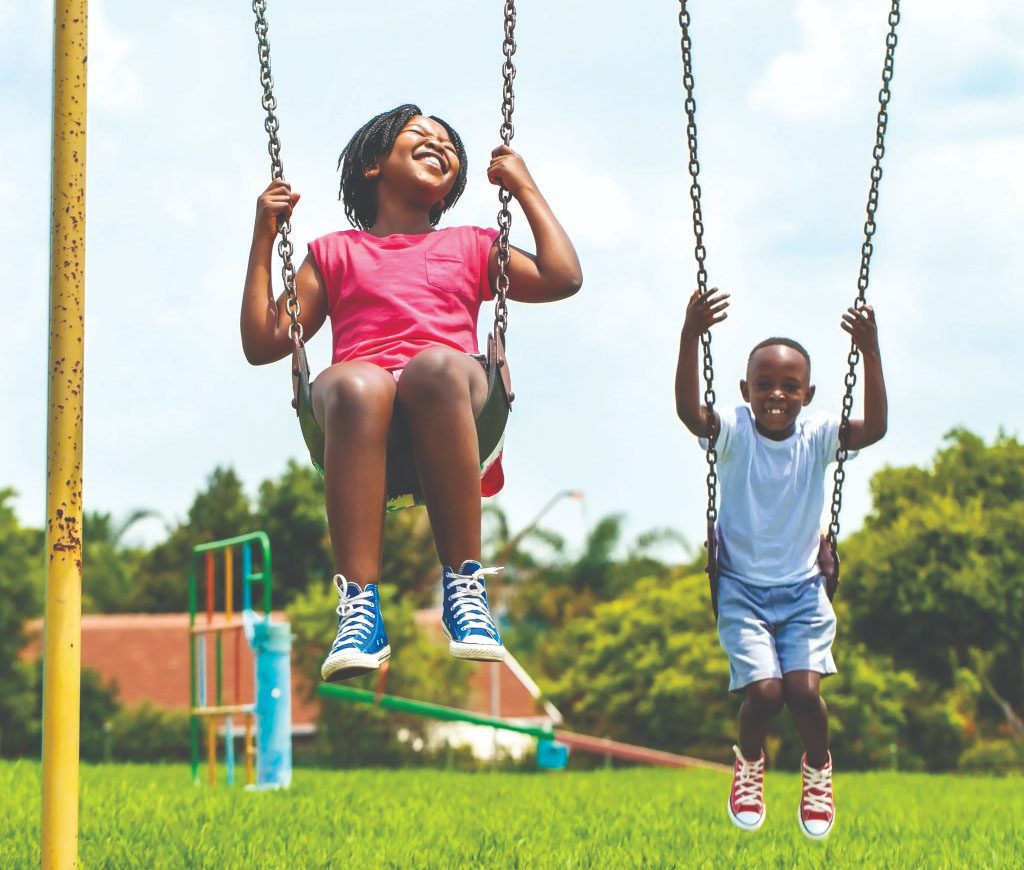The South African Schools Collection
Lets Get Moving!
South African children are spending less time participating in physical activities like playing sport, riding their bikes, climbing trees and rolling down hills. Instead their sedentary lifestyles are resulting in a growing number of unhealthy, obese children. So says Dr Rebecca Meiring, lead researcher in exercise physiology at the Movement Physiology Research Lab in the School of Physiology at the University of Witwatersrand.
She advises that children should be doing any exercise or activity that gets them huffing and puffing. “For younger children this can include playing outside, climbing on jungle gyms or just generally running around. The older kids get more structured exercise, but participation in any sport is good. It depends on the child, but team sport is probably more enjoyable as there is obviously a social aspect to it,” says Meiring.
Meiring says physical activity in children and adolescents has benefits for weight management, cardio-respiratory and muscular fitness, and bone health.
“Muscular fitness is especially important in children because it helps with developing core strength, which in turn results in good posture and less likelihood of back pain. Another benefit of exercise is weight management. According to the latest South African Demographic and Health Survey results that were released in 2016, 13% of children under the age of five are overweight. This figure is twice that of the global average,” says Meiring.
“In this case making sure that children participate in a lot of exercise will assist in minimising the detrimental effects of being overweight and obese on their health as adults.”
In 2016 the Healthy Active Kids South Africa report card was published at an international conference, where researchers from tertiary institutions in South Africa compiled a comprehensive report on physical activity and the overall health status of our nation’s children based on research that has been conducted in the country since 2011.
“The purpose of the report is to guide policy-makers, develop interventions and advocate the promotion of activity-permissive environments for South African children and youth,” says Meiring.
“Overall physical activity appeared to have improved from evidence presented in the 2014 report card. Girls, however, tend to participate in less physical activity compared to boys. Physical fitness and motor proficiency, organised sport participation and the role of school sport are areas that have not improved or declined since the last report, suggesting that these areas were not promoting engagement in physical activity effectively.
“Furthermore, studies show that sedentary behaviour (time spent sitting) among South African children and youth is high – more than two hours of screen time per day – and no studies have indicated an improvement since 2014.”
Liz Senior, occupational therapist and founder of Clamber Club, which is a sensory motor programme that gets children moving, says children in South Africa are spending far too much time in front of televisions, computers and tablets.
“It’s affecting the way they live and their health. There are a lot more obese children these days and children with anxiety and emotional difficulties because they are not getting that physical exercise, which helps to manage and release emotions.
“Children should be riding bikes, climbing trees, jumping in hoops, throwing up leaves in parks and playing in mud to build their immune systems. I’m not saying modern technology is a bad thing, but there needs to be a balance,” says Senior.
“Climbing, rolling and tumbling, helps to regulate the body. Physical activity helps strengthen the lungs, increase blood flow to the brain, strengthens bones, improves sleep and helps alleviate anxiety,” she points out.
Senior says parents play a critical role in their child’s attitude to exercise. “Parents can influence their child’s fitness habits, positively or negatively. A child who has active parents is six times more likely to be physically active. If a child never sees his parents exercise, why should he exercise?” Exercise needs to be fun if parents want their child to continue with it.
“Children, especially those in urban areas, seldom get the chance to get out and dirty in the big outdoors. Parents need to take their children out into nature, on walks and hikes,” she says.
Johannesburg sports physician Dr Jon Patricios says exercise is overwhelmingly positive at any age, particularly for body development, helping to build children’s confidence and social skills, developing co-ordination, strengthening muscles and bones, improving learning, concentration, health and fitness, as well as helping them maintain a healthy weight. He says children need at least an hour a day of exercise where they are raising their heart rate.
“Kids need to be moving from a young age, from the time they can crawl,” says Patricios.
“They need to be doing different types of exercise that involve different body parts. Parents should encourage their child to get involved in any form of exercise, whether it’s running around the garden or park, riding their bike, swimming or climbing trees, to get off the couch,” says Patricios.
“Exposing them to a sport on an informal and fun basis, whether at school or a club, encourages the child.”
He says on the whole children just aren’t getting enough exercise.
“A lot of children aren’t exercising at school, a lot are probably spending too much time on screens, and the other extreme is that children are exposed at a very high and competitive level to sport that’s tiring them out and causing injuries. There’s a balance we’re lacking, and that’s where parents have a role to play in terms of monitoring and exposing their child to the right amount of exercise,” he says.
Patricios says he treats children from as young as six years old, adding that he sees most types of injuries from ages nine to 15.
“The growth years are the most vulnerable. In boys there are more traumatic injuries associated with contact and collision sports such as soccer and rugby. Girls are exposing themselves to a greater variety of sport. Most of the injuries in children are in developing bones,” says Patricios.
Dr Philippe Gradidge, biokineticist and senior lecturer at the University of Witwatersrand’s Centre for Exercise Science and Sport Medicine, concurs.
“They need to be careful in the type of exercise they choose. It should be more fun and playful activity. Kids should be advised to be more active outdoors, to reduce their sitting time. It’s part of development and preventing future disease,” he says.
Gradidge says the greatest impact due to a lack of exercise is cardio-metabolic disease, such as high blood pressure and type 2 diabetes.
“Less active children are at risk of the early onset of diabetes, hypertension, and high cholesterol – diseases you would normally see in the older population,” he says.
Age appropriate games for your child Four to six years – play hide and seek, ball games, catches, hop on one leg, skip, gallop and jump, balloon games and build obstacle courses around your house.
Seven to 10 years – eggy in the middle, ball dodge, sevens (with your tennis balls against a wall), swimming and mucking about in the pool, and running around the school track together.
11 and 12 years – family netball, tennis or soccer, outrides on bikes, go to the gym together, and get up early for a run.
– Supplied by Liz Senior, occupational therapist and founder of Clamber Club
The benefits of exercise
Durban biokineticist Thasmae Chetty says that regular physical activity can help children and adolescents improve cardiorespiratory fitness, build strong bones and muscles, control weight, reduce symptoms of anxiety and depression, and reduce the risk of developing health conditions such as heart disease, cancer, type 2 diabetes, high blood pressure and osteoporosis.
In addition, Chetty suggests regular exercise to help improve lung function: “Asthma is a condition that produces restricted lung capacity and efficiency. Regular exercise will definitely improve lung function and boost the immune system,” says Chetty. “This allows for improved stamina and enhanced functionality.”






 Sign-up and receive the Business Media MAGS newsletter OR SA Mining newsletter straight to your inbox.
Sign-up and receive the Business Media MAGS newsletter OR SA Mining newsletter straight to your inbox.